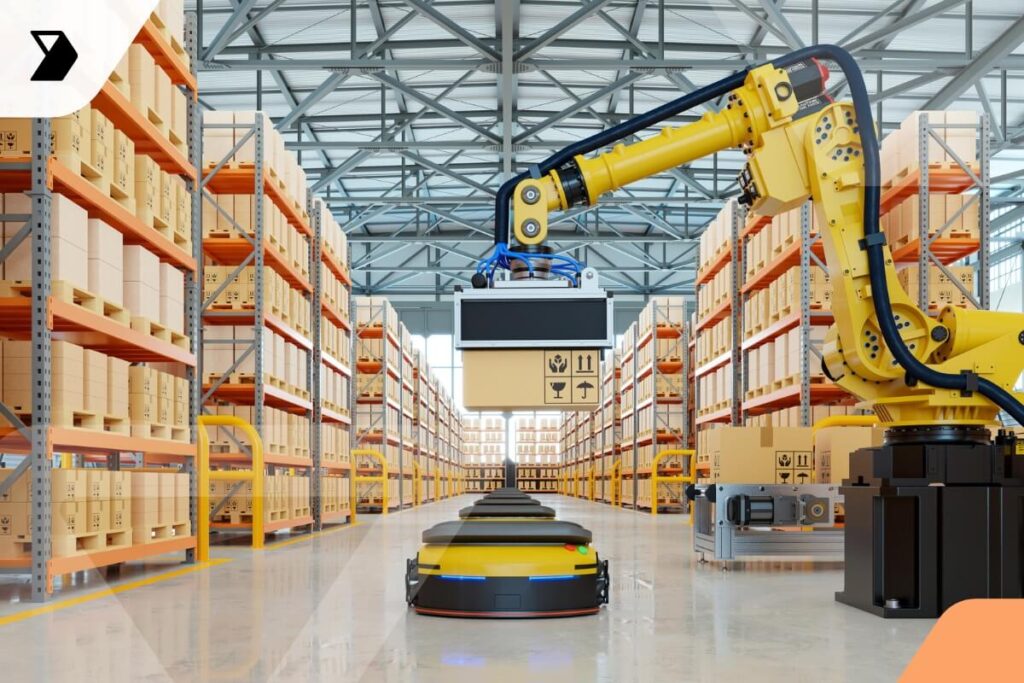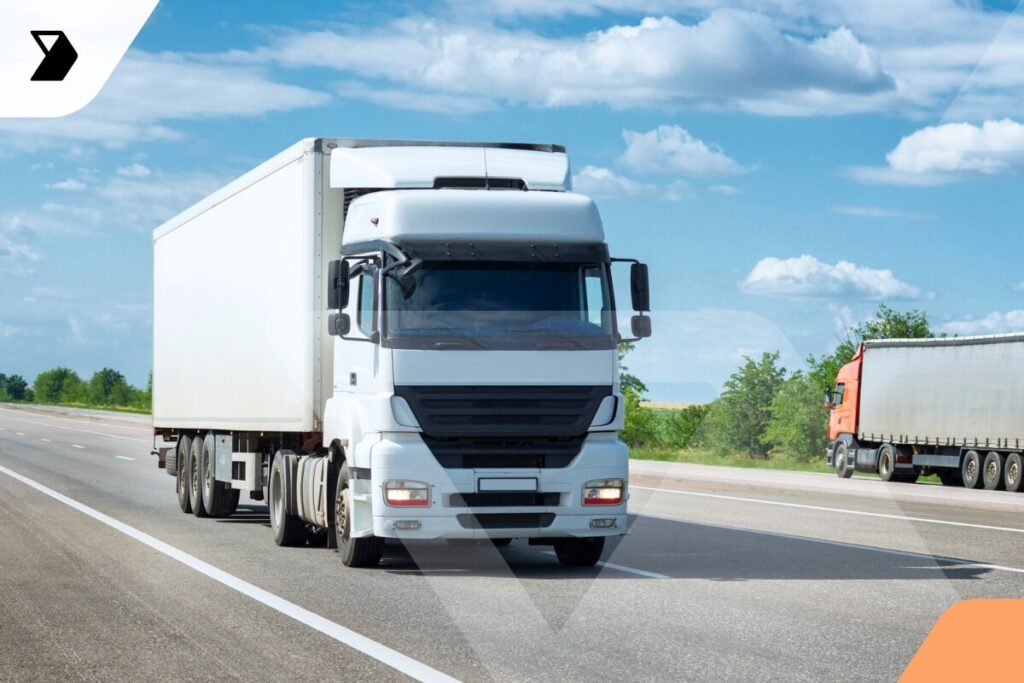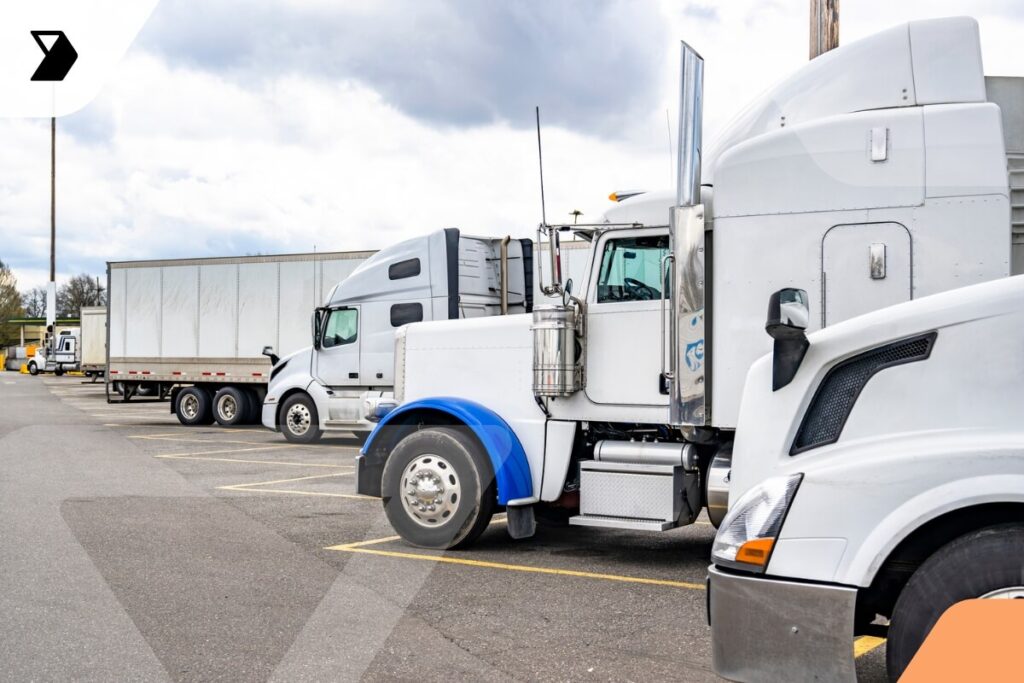Gate & Guard Maturity Index
The access point for many warehouses and commercial operations is a gate, whether controlled by state of the art cameras or the remains of an attempted security initiative years ago; gates and guards play a critical role in keeping operations running and ensuring safety.
Ready to transform your supply chain?
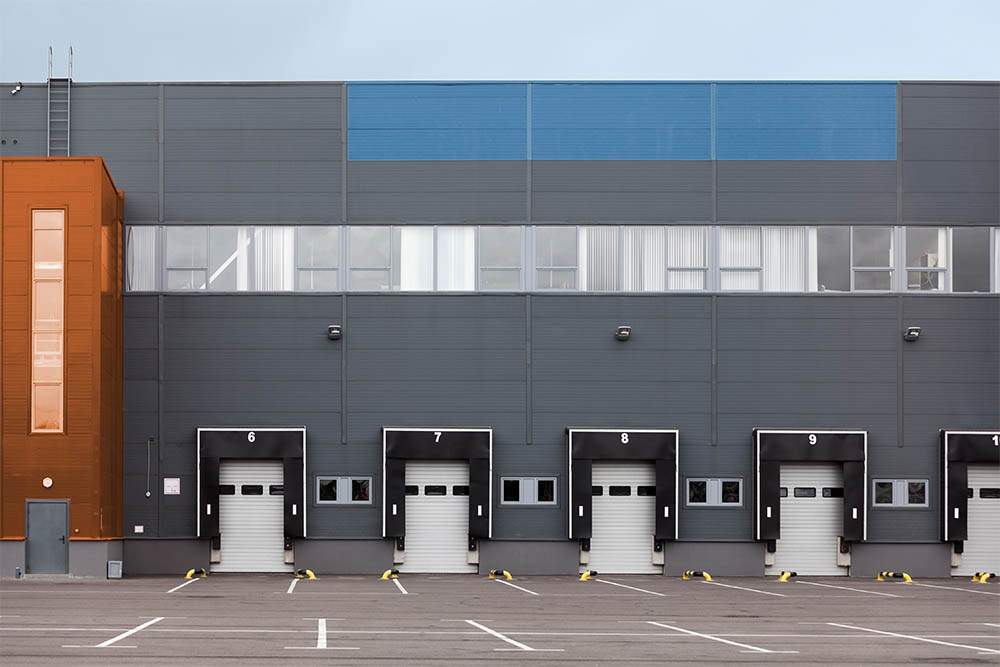
The gate and guard operations are often deeply woven into yard management, warehouse operations, security, efficiency, and safety. Gate control streamlines the entry and exit process, effectively managing traffic and workflow operations.
We’ve developed a Gate and Guard Maturity Index framework which allows companies who have internal or 3rd party warehouses ways to evaluate and improve the effectiveness of your gate management. By understanding the different maturity levels and implementing the appropriate systems, warehouse and logistics managers can significantly enhance their operations and ensure smooth, secure access control.
Why is digitizing the gate the next big trend in warehouse & transportation?
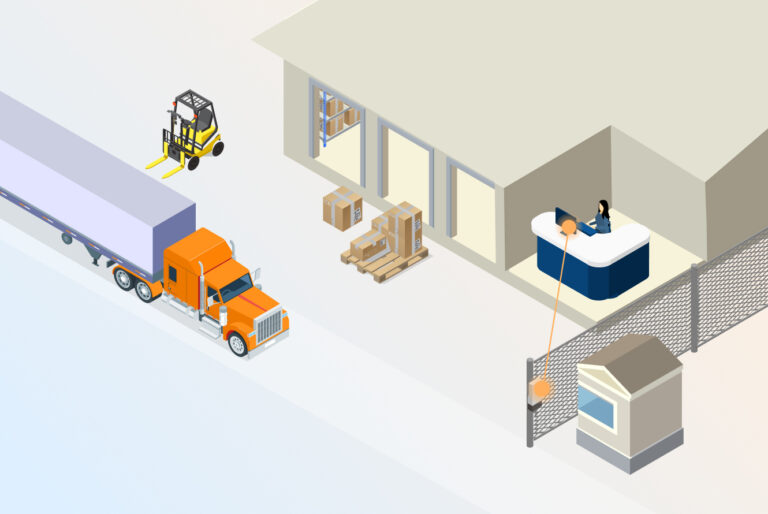
Digitizing gate systems is rapidly becoming a pivotal trend in warehouse and transportation management. Advancements include hardware solutions that include motion-activated cameras, facial recognition, license plate recognition, and gate control arms controlled through the guard shack. The rise in technology investment and process improvement is driven by four primary factors:
1. Fraud continues to rise and hit corporations
Freight fraud has risen dramatically as the freight market has been in a recession for the last 2 years, so companies have been struggling financially, and organized crime continues to become more advanced, targeted, and savvy to take advantage of operations with low to no oversite. Manual gate systems are labor intensive and often left open 24/7, creating a straightforward target for thieves. With trailer values usually exceeding $50,000 in product value and the risk that companies bear by products being exchanged on the black market, manual operations are an easy target.
2. Customer experiences are rapidly changing and forcing leaders to rethink their capabilities
Today, consumers demand faster, more reliable, and seamless services. As a result, warehouse and transportation leaders must adapt to these evolving expectations to remain competitive. Customers want their trailers loaded within 30 minutes of arriving on-site so their drivers or common carriers can get on the road. Any dwell time at the origin risks the delivery of the goods.
3. Warehouses continue to look at optimizing processes and eliminating manual work
Hand-operated tasks at the gate, such as physical check-ins and paperwork, are time-consuming and prone to errors. Security operations are often outsourced to third-party companies. Having skilled labor trained, qualified, and always at the ready has been an ongoing challenge across the United States for shippers and 3rd parties; high turnover rates often plague initiatives from being successful. By introducing automated gate access control, warehouses save time and reduce labor costs.
4. Companies are looking to optimize costs across facilities and standardize functions
Digitizing the gate allows for the standardization of access control processes across multiple locations. When looking in a silo, having a guard operation of 3-6 FTE’s may not seem significant, but if you are running 20 facilities with an average of 4 FTE’s, this quickly becomes an immediate opportunity to optimize labor expense as well as secure and standardize process across a network. Control Tower operations have existed in transportation management for the better part of the last twenty years. Still, warehouse operations have long been heavily operated on-site, with camera technology and check-in platform solutions advancing significantly. Centralizing security teams in a single control tower is now a real opportunity for companies operating multiple locations.
What is the gate and guard maturity index?

This index categorizes gate access control into different maturity levels, representing technological progression, operational efficiency, and security measures. By understanding and applying this index, yard managers can systematically improve access control systems, leading to better security, streamlined operations, and enhanced overall yard management.
LVL 1. No Gate Arm
Freight fraud has risen dramatically as the freight market has been in a recession for the last 2 years, so companies have been struggling financially, and organized crime continues to become more advanced, targeted, and savvy to take advantage of operations with low to no oversite. Manual gate systems are labor intensive and often left open 24/7, creating a straightforward target for thieves. With trailer values usually exceeding $50,000 in product value and the risk that companies bear by products being exchanged on the black market, manual operations are an easy target.
LVL 2. Push Button by Guard
Drivers must exit the truck and press a call button to notify the guard of their arrival. While this method introduces some level of automation, it still requires the driver to leave the vehicle, which can be inconvenient and time-consuming.
The guard shack serves as a central point for security, allowing for better organization and a more structured check-in process.
LVL 3. Remote Controlled
Level 3 incorporates remote check-in through an intercom system, allowing drivers to communicate with the guard via an intercom installed at the gate.
The guard, stationed within the warehouse, can remotely control the gate arm and provide instructions without needing to be physically at the gate.
LVL 4. QR Code / Pin Code
The check-in process is fully automated and contactless at this most advanced level. Drivers scan a QR code or enter the PIN code at a gate terminal, which verifies their credentials and grants them access.
Remote guards manage security stationed at an off-site control tower. They can access real-time monitoring tools and oversee multiple sites simultaneously.
Effective Market Alternatives for Solving These Issues

Digitized gate systems provide alternatives that address fraud and changing customer experiences. At four maturity levels, these systems offer solutions to optimize processes and reduce costs across all your facilities. Their capabilities include:
- Real-time monitoring and data analytics: These features allow for immediate detection and response to suspicious activities, reducing the risk of fraud and boosting overall security.
- Streamlined check-in and check-out processes: Advanced gate systems reduce waiting times for drivers, improve workflows, and seamlessly integrate with other tools such as yard management systems. This ensures efficiency movement of goods through the supply chain, improving delivery times and enhancing customer satisfaction.
- Enhanced data capture and transfer: By eliminating manual entry, these systems speed up processes and ensure accurate, up-to-date information, promoting warehouse operational efficiency.
- Scalability and cost optimization: Digitized gate systems reduce the need for disparate setups and associated maintenance expenses. They also provide analytics and reporting, helping to identify inefficiencies and areas for cost reduction, allowing for more effective resource allocation across facilities.
3 Three future trends in warehouse & transportation

As the digital transformation of gate access control systems accelerates, several emerging trends are poised to redefine the warehouse and transportation management landscape. Three key trends that will shape the future of gate access control are:
Camera vision technology will rise as facilities desire to move to L4
The drive towards Level 4 gate access control, which involves fully automated and contactless systems, is fueling the adoption of camera vision technology. This technology uses advanced cameras and sensors to monitor and manage gate access in real-time without requiring physical presence.
Integrated with machine learning algorithms, these systems can automatically recognize license plates, QR codes, and other identification markers, facilitating seamless entry and exit processes. The data captured by camera vision systems can be analyzed to identify patterns, optimize traffic flow, and enhance overall yard management.
Facial recognition and verification will be adopted at the warehouse level
Like passenger air travel with the TSA, this identification technology is set to enter warehouse management, offering a highly secure and efficient way to verify identities at the gate and throughout the facility.
These systems can be integrated with existing security infrastructure, automatic gates, and yard management software, providing a unified approach to access control.
Driver pre-check verification will begin automated picking in warehouses
Drivers can complete verification using their cell phone, existing phone line, or online platforms and receive entry credentials such as QR or PIN codes in advance. The system recognizes these credentials, granting immediate access and directing them to the appropriate loading or unloading areas.
The pre-check verification system also communicates with warehouse management systems (WMS) to provide real-time updates on driver status and expected arrival times, allowing for better planning and resource allocation. Integrating telephone entry systems enhances this process by providing additional convenience and security for drivers and warehouse operations.
Frequently Asked Questions
1. What is the best gate access control system?
The best gate access control system combines RFID technology, authentication, and advanced surveillance to ensure high security and efficient yard management. It should offer seamless integration with existing yard management systems, provide real-time monitoring, and be scalable to meet the evolving needs of the facility.
2. What is automated access control?
Automated access control is a system that uses technology, such as QR pins or codes, biometrics, or RFID, to grant or restrict access to physical or digital resources automatically. An automated gate system enhances security by ensuring only authorized individuals can enter secure areas or access sensitive information without manual checks.
3. How secure are automated gates?
Automated gates are highly secure, integrating advanced technologies like RFID, biometric scanners, and surveillance cameras to control access and monitor activity. With no need for a physical gate operator, they provide robust security by ensuring that only authorized vehicles and personnel can enter the premises, reducing the risk of unauthorized access and enhancing overall yard safety.
4. What are the main types of gate openers?
Automated gate access control systems are essential for enhancing security and efficiency in yard management. The main types of gate openers include swing gate operators and slide gate operators, each designed to provide access seamlessly while maintaining robust security. Swing gate operators are ideal for locations with ample space, offering a wide opening for vehicles, whereas slide gate operators are perfect for tighter areas, sliding horizontally to save space. These systems integrate advanced technologies to ensure that only authorized vehicles and personnel can enter the premises, significantly improving overall yard operations.
Continue reading
Ready to transform your supply chain?
Increase efficiency and productivity. Say goodbye to delays, handwriting errors, and time-intensive manual data entry.

